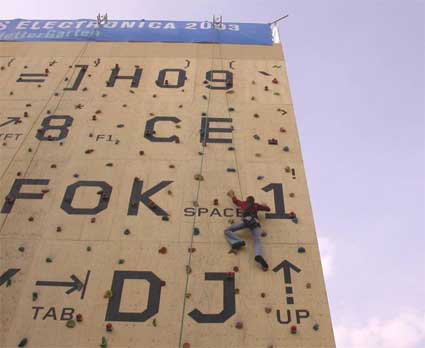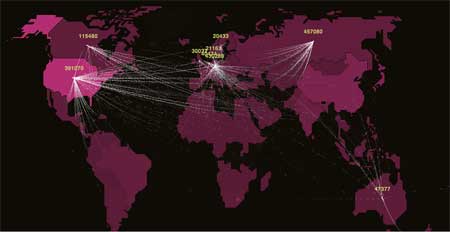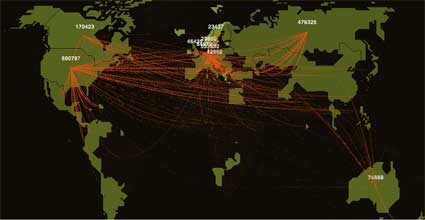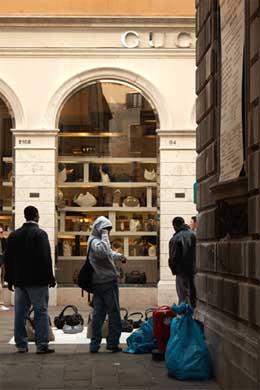Book review: Tactile – High Touch Visuals
Posted in: UncategorizedTactile – High Touch Visuals, edited by R. Klanten, S. Ehmann and M. Huebner. 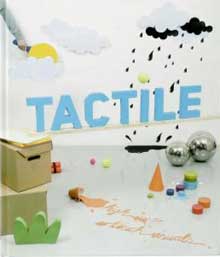 (Amazon USA and UK.)
(Amazon USA and UK.)
Publisher Die Gestalten says: Tactile shows how graphic design is moving into three-dimensional objects and products. The innovative examples documented in the book demonstrate how designers are developing and implementing their ideas spatially from the very outset of a project. Tactile proves that spatial innovation in graphic design is not limited to personal work or artistic endeavours, but is being sought out more and more often by commercial clients, for example, in store design.
When i’m in Berlin, i spend ages in bookshops, i’d leaf through a book, wondering whether i should buy it or not. If it’s a book about contemporary design or art, i feel like the old bat who’ve seen most of what’s inside the book at a biennale or fair. Sometimes i discover the work of an artist i like in the book, i’ll then take my notepad and pen (sorry to disappoint anyone who thinks i’m cool enough to have blackberry or i-phone) and write down the name of the artist, and once i’m back home i google the name. But sometimes there is a book that makes me say “Gosh! i’m still such an ignorant, am i not?” I turn page after page and discover creators i’d never heard about. Go! I collect my bonus, and go straight to the cash machine.
Tactile is one of those book. It demonstrates in a very visual way (there’s very very little text inside) how digital technology has freed designers from their screens and sheets of paper and allowed them to explore 3D with collages, sculptures, installations and objects. I like the way most of the works presented in Tactile are still very close to their 2D origins, there’s no cheating, no ambition to be a product designer (though sometimes they should), it’s pure 2D made and cut to inspire our 3D ordinary existence.
A selection of goodies from each chapter:
Chapter 1.
Type & Poster, in which graphic design dresses in foam, wool, ice, meat (!!) or bricks and ventures in the great outdoors.
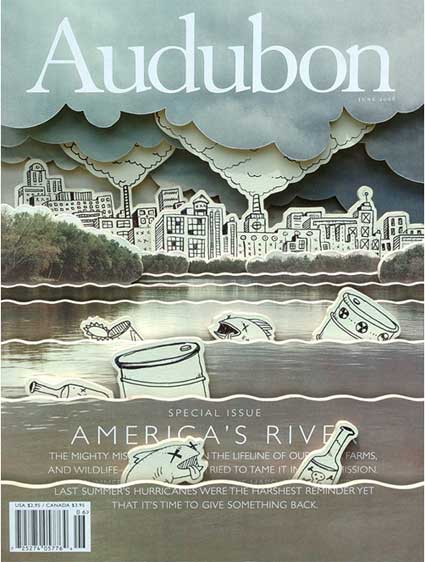
Thundercut for Global Inheritance
Chapter 2
Objects, Scenes & Paperworks is an orgy of origami, cardboard landscapes, heroes and characters going literally for a walk out of the pages. There’s Michael Salter‘s robots made of styrofoam, Simon Elvins‘ fabulous Paper Record Player
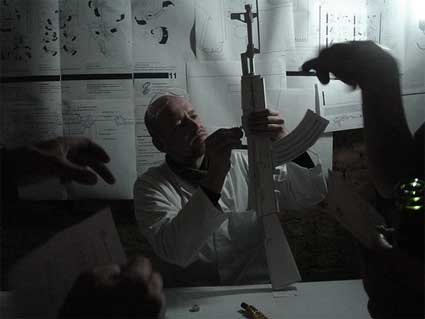
Paper Gun Factory by Martin Postler (images courtesy of Noam Toran)
After having investigated the history and the aesthetics of the AK-47, also called the Kalashnikov after its inventor, designer Martin Postler (whose project Life/Machine – Scenes from a Roboted Life you might remember) freed the AK-47 from its lethal substance by deconstructing it into a paper model construction set and putting the emphasis purely on the weapon aesthetics. What remains of the gun itself when void of purpose: Is it still a gun? Is it still a beautiful object if its lethal function is eliminated?
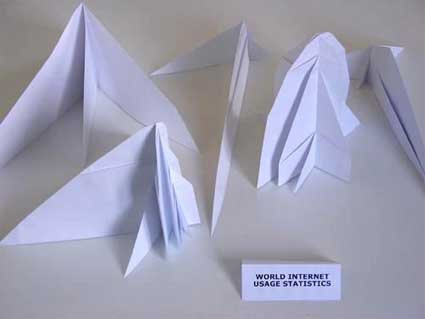
I also like Etienne Cliquet‘s ordigami internet statistics (also available in keyboards, computer fan, audiospeakers, etc.)
Chapter 3
Dressed Up is probably the chapter which brings you the most surreal examples of the trends. Graphic design is wrapped around the body, stuck onto faces and twisted in the hair.
Love at first sight for the work of IJM.
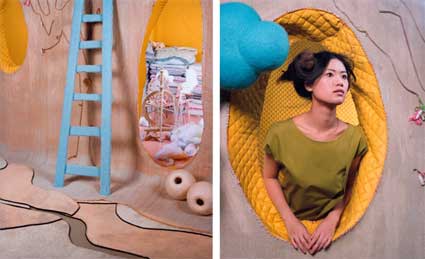
IJM, Chinese Spring
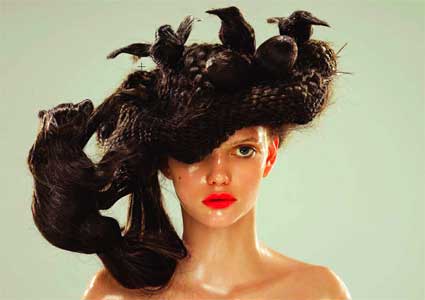
The ueber-talented team from Uchu Country created a Relax Magical Hair Tour extravaganza for Relax magazine
Bryony Birkbeck designed the costumes for the On Board video of Friendly Fires.
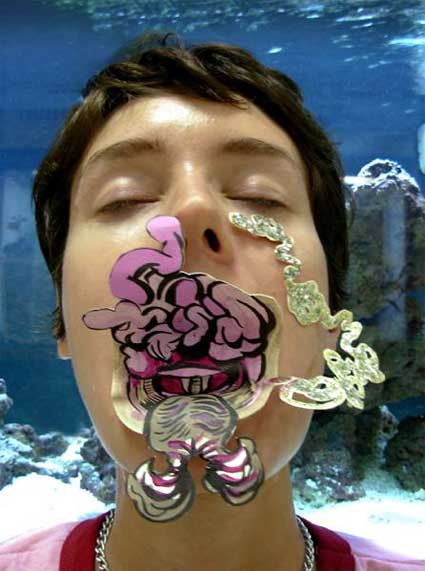
Christa Donner: Alternative Anatomies, Mouthful, documentation of collaborative public intervention, with Kristine Seeley
Chapter 4
Products & Sculptures is an entertaining mix of hand-made (where the un-perfection becomes valuable) and high-tech (think rapid prototyping, new materials, etc.)

Sandrine Pelletier, Battlefield III

FromKeetra‘s THE GREAT SLUMBER a.k.a.Blood Puddle Pillows
Chapter 5
Indoor Installations shows how some graphic designers take a scene you’d expect to see flat and quiet on a piece of paper or a computer screen and import it into a building, making visitors think that they are living in a comic strip or a “drawing installation.”

Jonas Liverod, Drawing installation at Kabusa Konsthall, Sweden.

Fulguro, Label Suisse (Music Festival)
Chapter 6
Outdoor Installations: see previous chapter, except that this time, it’s the great outdoor for everyone, sharing some methods and sometimes a certain penchant for subversion with street art.
For ars electronica 2003, Bitnik and FOK, transformed the facade of the Linz’Art University in to a gigantic keyboard, inviting members of the audience to used it as a climbing wall. They get a crash course in climbing and software development. After that climbers and programmers collaboratively inputed code into an oversized programming environment. During one week, they programmed codes, scripts and tools and demonstrated various software functions. Not only did the Teleklettergarten turned programming into a physical experience, it also use this public and collaborative programming interface to collectively demonstrate against the arbitrary awarding of software patents for core functions which are the basis of day-to-day work with computers. By ensuring that the illegal action (the execution of patented code) is performed by an anonymous collective, no single person can be made responsible whilst being able to publicly demonstrate the restriction these patents mean for programmers and for the whole user community.
Image appearing on the home page: Agata Bogacka, Glass, edition, 2004.
Related book reviews: Super Holland Design, Hand Job: A Catalog of Type, JPG 2: Japan Graphics, Hidden Track: How Visual Culture Is Going Places.

